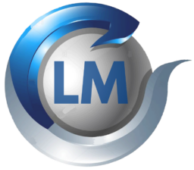-
Willumsen posted an update 1 year, 1 month ago
With regards to picking a forklift for the business, there are many critical indicators to take into consideration. Forklifts are available in various kinds and sizes, each designed for specific operating conditions. Selecting the right forklift can greatly impact the productivity and efficiency of the operations.
So, what in the event you bear in mind when choosing a forklift?
Operating Environment
The initial step to consider could be the operating environment. Forklifts are built to work with different settings, including warehouses, construction sites, or outdoor yards. It is important to look at the terrain, surface conditions, and then any potential obstacles with your workplace. This will help determine the kind of forklift which is suitable for your specific environment.
For indoor operations, electric forklifts can be a popular choice because of their low noise levels and zero emissions. They’re also well-suited for narrow aisles and confined spaces. However, outdoor applications may need forklifts with larger tyres and more robust features to deal with uneven terrain and climate conditions.
Capacity and Load Size
Another crucial consideration is the capacity and load size that the forklift will likely be required to handle. Forklifts can be bought in different weight capacities, which range from light-duty to heavy-duty models. It is important to accurately assess the maximum weight of the loads you may be lifting so that the forklift are prepared for the workload.
Additionally, think about the dimensions and form of the loads. Some forklifts are specially made to handle long or bulky items, while some are better suited for palletised loads. Evaluating your particular load requirements can help you go with a forklift using the appropriate capacity and attachments.
Lift Height
The lifting height needed for your operations is another important factor to take into consideration. Forklifts feature varying maximum lift heights, and it’s also important to select one that will get to the desired elevation. It is very important be the cause of any height restrictions inside your facility, for example doorways or racking systems.
If you need the ability to lift loads to significant heights, you may want to think about forklift with an increase of mast options, for instance a triple-stage mast. These masts provide increased lifting capabilities and improved stability at higher elevations.
Fuel Type
The option of fuel type on your forklift is the one other critical decision. Forklifts can be operated by different fuels, including electricity, diesel or gas. Each fuel type have their advantages and considerations.
Electric forklifts are eco-friendly, produce no emissions, and still have low noise levels. Work well on indoor use, however they might have limited battery and wish a charging infrastructure. Diesel forklifts are better suited to outdoor applications because of their higher power output and longer runtime. Gas forklifts offer versatility and is used both indoors and outdoors, with quick refuelling capabilities.
Think about your operational needs, cost factors, and then for any specific regulations or restrictions in the area when choosing the fuel type for your forklift.
Maintenance & Servicing
Regular maintenance and servicing are essential in order to keep your forklift in optimal condition and ensuring its longevity. When choosing a forklift, take into account the easy maintenance and accessibility of critical components. Forklifts with easy to get to engine compartments and well-designed maintenance points can help to conserve time and money during servicing.
Parts Availability
Consistent with maintenance considerations, it is crucial to evaluate the production of parts for your forklift you select. Choice a forklift brand that features a great deal of readily available parts. This ensures that any necessary repairs or replacements can be quickly accomplished, minimising downtime, and maintaining productivity.
Own Outright or Hire
Deciding if they should purchase a forklift outright or to choose short-term or contract hire is an additional factor to consider. Buying a forklift provides you with full ownership and control of the equipment, helping you to customise it to your specific needs. However, additionally, it involves upfront costs, maintenance responsibilities, and potential depreciation.
Getting a forklift, alternatively, offers flexibility and eliminates the requirement for upfront capital investment. It really is well suited for businesses with fluctuating or seasonal demand, as you can adjust the fleet size if required. However, it is important to evaluate the long-term costs and the hire agreement.
Selecting the most appropriate forklift for the company is a decision that can significantly impact your operations. Considering factors like the operating environment, capacity and cargo size, height requirements, fuel type, maintenance and servicing, parts availability, and ownership options can help you make an informed decision.
To learn more about xe nang dau visit this useful internet page
